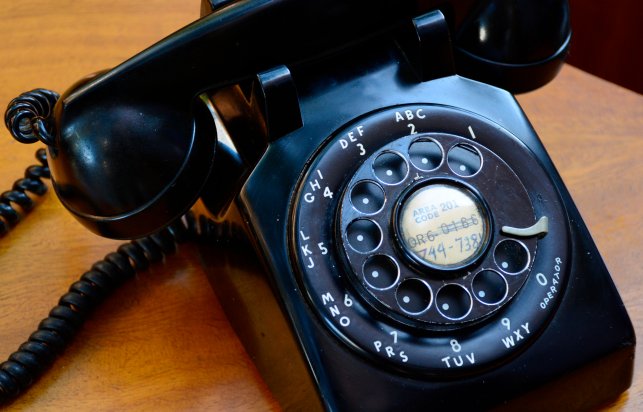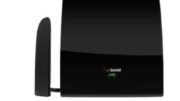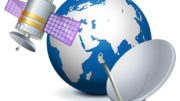There’s an old, almost forgotten movie called The Last Action Hero. In it, Schwarzenegger makes fun of himself and the action roles he was known for. Within it is this very 1990s exchange, which even takes place in a Blockbuster Video because of course it does.
I think about this little clip every time I think of the history of area codes. Which, being a tech blogger, I do a bit more than other people do.
Life before area codes
Most people today know that the telephone was invented by Alexander Graham Bell Elisha Grey in 1876. But, most of us don’t stop to think about how the system grew. We’re all old enough to remember that landlines existed, but before that it gets a bit murky.
The first telephone systems were really more like intercoms. There was a person in a central office who would listen in and manually connect you to someone else. This continued for about 60 years believe it or not.
It was a largely forgotten inventor named Almon Strowger who invented what we would now call direct dialing. His mechanism let any telephone connect to any other local telephone without a human operator. Believe it or not, although the Strowger device was invented in the 1890s, humans continued to connect calls for more than half a century after that.
By the time we get to the second world war era, direct dialing within your local area was pretty common. People were even writing songs about it:
Hard to imagine someone writing a song like that today. But I digress.
If you had to dial outside your local area back then, you always had to use an operator. The real reason for this wasn’t tech, it was capitalism. Local telephone companies were independent of each other. There were a few big ones, but also quite a few smaller operators. To call between them took a lot of work. Regular folks would dial zero for the operator and then say “Give me long distance.” It was ridiculously expensive, too.
Enter area codes
By mid-century, overworked telephone operators needed ways to connect long distance calls quicker. The idea was to create three-digit phone numbers that would connect them to operators in other cities. This is the idea that eventually became the area code system. The first plans for this were created in 1947. For about the first decade that these codes were in use, they were only for telephone operators. And then, AT&T began to test direct dial calls. Once again, YouTube comes to the rescue with a nice little find from the day:
It’s not incredibly clear today why Englewood, New York was chosen to test area codes. But, they did so and did so successfully. Lucky for us too, because voice calls wouldn’t have lasted as long as they did if everyone had to talk to an operator. Texting would have been comical- dial zero and tell the operator what to text someone. Yeah, that would have worked.
How area codes used to work
Today, an area code can be any three digit number. Originally, using the systems of the day, the rules were a little tighter.
- The first digit had to be a number between 2 and 9.
- The second digit had to be 0 or 1.
- The third digit had to be a number between 2 and 9.
The first digit couldn’t be “1” since that was the country code for the United States. Dialing “1” as the first number would have made it an international call. Having the second number be 0 or 1 let the primitive computers of the day figure out that you were using an area code. (Dialing 1 before long distance numbers didn’t come until later.)
There’s a hidden logic there, though, one that we don’t think about today. Back then, all phones looked like this:

In case you’ve never used one of these, you put your finger in the hole and spun the center part around. It took a lot longer to dial a zero than it took to dial a one. The people who created area codes took that into account. They gave the largest, busiest parts of the country the area codes that took the least time to dial. New York got the fastest possible area code, 212. Los Angeles and Chicago got the next fastest, 213 and 312.
I’ve always found it funny that Boston, the area where Alexander Graham Bell set up the first telephone exchange, got saddled with 617, which takes a lot longer to dial. I guess that’s a little bit of disrespect toward Bell. (Elisha Gray hailed from Chicago, which as I said was 312.)
The pettiness
I actually imagine this group of very petty people sitting around assigning area codes to cities based on how much they liked the people there, not on anything else. How else can it make sense that Miami (which was pretty small before air conditioning became common) got area code 305? How was it that the people of Los Angeles proper got the speedy 213 while outlying areas got the much slower 818, 714, and 619? And speaking of Los Angeles, what did the people of inland Southern California do to deserve the slowest possible area code, 909?
Of course today it doesn’t matter because touch tones
Starting in 1963, US customers had the option of using Touch Tone keypads on their phones. This obviously sped up phone dialing (although it continues to be called “dialing” for whatever reason.) Touch Tone service started in the Philadelphia area and I know for a fact it was available in Manhattan by the mid-1960s as well. But, it was slow to roll out nationwide and even slower to reach universal adoption. Well into the 1980s, phone companies charged more for touch-tone phones and touch-tone service. That stopped in the 1990s, but it wasn’t until the late 2000s that most phone companies stopped supporting the old dial phone systems. Some still do even yet today.
Life with area codes
There was a time that an area code was something of a status symbol. If you were a New Yorker, you wanted a 212, not the dreaded 718 or 914. Today, we’ve largely given up that silliness and the reason is clear: most of us don’t even know anyone’s phone number anymore. When we do get a new phone number, we barely register the area code. Cell phone number portability means that you can have the same number your whole life, complete with the area code you got when you first signed up. Many cell carriers will simply give you a choice of area codes if you want. With unlimited long distance calling it makes no difference to them.





